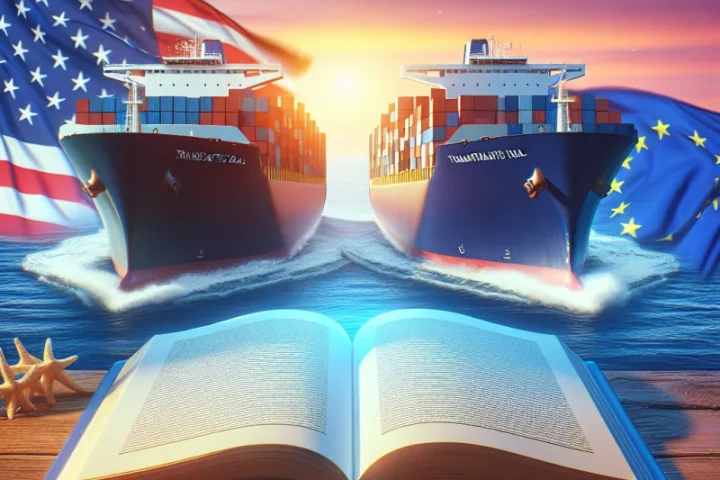The Russian invasion of Ukraine on February 24, 2022, represents a watershed moment in post-Cold War European security, fundamentally reshaping NATO’s strategic doctrine and catalyzing the most significant transformation of the European security architecture since the alliance’s founding. As the conflict approaches its fourth year, the long-term implications extend far beyond Ukraine’s borders, redefining deterrence strategies, alliance structures, and the balance of power across the continent.
The Strategic Transformation of NATO
From Collective Defense to War-Fighting Alliance
Russia’s full-scale invasion of Ukraine has unified the transatlantic alliance and its partners—the transatlantic community is stronger than ever, and NATO’s core mission is, and remains, collective defense in Europe. The war has revolutionized NATO’s military strategy, moving the organization to a more capable war-fighting alliance and toward deterrence by denial.
This fundamental shift represents NATO’s evolution from a primarily political alliance focused on crisis management to an organization prepared for high-intensity conventional warfare. The alliance has moved away from the post-Cold War assumption that major interstate conflict in Europe was obsolete, embracing a reality where territorial defense against peer competitors has become the primary mission.
Eastern Flank Reinforcement and Permanent Presence
The conflict has shifted the balance of power in Europe to the east, ushering in the beginning of a strategic realignment. NATO’s commitment to deterrence by denial requires a sustained and coordinated defense industrial revolution among its members, fundamentally altering the alliance’s force posture.
The power balance in Europe has shifted east, which will require modernization of NATO’s defense posture, including a permanent presence on the eastern flank. This represents a departure from the alliance’s previous approach of rotating forces, establishing instead a continuous military presence designed to provide immediate deterrence against potential Russian aggression.
Unprecedented Support Mechanisms and Financial Commitments
Military and Financial Assistance
Since the start of Russia’s war of aggression against Ukraine, Allies have provided unprecedented political, economic, military, financial and humanitarian support, including military assistance amounting to roughly EUR 40 billion annually. At the 2024 Washington Summit, Allied Leaders announced a Pledge of Long-Term Security Assistance for Ukraine, with Allies agreeing to provide a minimum baseline funding of EUR 40 billion within the next year.
In 2024, Allies provided EUR 50 billion to Ukraine, with nearly 60% coming from European Allies and Canada. In 2025, Allies have so far committed an additional EUR 35 billion in security assistance, demonstrating sustained commitment to Ukraine’s defense capabilities.
Institutional Innovation
NATO has established innovative mechanisms to support Ukraine while maintaining alliance cohesion. The NATO Security Assistance and Training for Ukraine (NSATU) coordinates the provision of military equipment and training for Ukraine by Allies and partners, representing the first major institutional innovation specifically designed to support a non-member partner in wartime.
The NATO-Ukraine Joint Analysis, Training and Education Centre (JATEC) in Bydgoszcz, Poland, is the first joint NATO-Ukraine organisation and an important pillar of NATO-Ukraine relations, where Ukrainian and NATO personnel work hand-in-hand to identify and apply lessons learned from Russia’s war against Ukraine.
European Union’s Defense Awakening
Common Security and Defense Policy Evolution
Russia’s full-scale invasion of Ukraine on 24 February 2022 marked a critical turning point in European security, reintroducing high-intensity warfare to the continent and fundamentally transforming the EU’s Common Foreign and Security Policy. The EU has moved from a primarily civilian power to an organization capable of military assistance and defense industrial coordination.
Despite its theoretical strength—€70 billion annual turnover, over 500,000 employees in 2021, and more than 2000 SMEs—the European Defense Technological and Industrial Base has struggled to meet wartime demands. Although ammunition production has increased since February 2022, the EU fell short of its goal to produce one million shells for Ukraine within a year, reaching an output of 1.4 million units per year in 2024.
Bilateral Security Agreements and European Initiatives
Of the EU’s €49 billion total military assistance to Ukraine, €43.2 billion has been provided bilaterally by Member States, demonstrating the continued importance of national capabilities alongside collective efforts. Member States have increasingly launched independent initiatives, including the Czech Republic’s ammunition supply program and Germany’s Immediate Action on Air Defence initiative.
Emerging Security Architecture Scenarios
Post-NATO Considerations
Some Ukrainian politicians now speak openly of a post-NATO reality in which Europe must form new structures and alliances to fend for itself. “No one knows if NATO will be present if things actually happen,” said one Ukrainian parliamentarian, reflecting growing uncertainty about the alliance’s future reliability.
This sentiment reflects broader concerns about the durability of transatlantic security commitments, particularly as the United States potentially reduces its European engagement. Ukrainian leaders increasingly view their country as providing valuable security lessons to Europe: “Ukraine suddenly became a valuable security partner. We’re willing to fight and give you a lot of valuable lessons.”
Four-Scenario Framework for European Security
Analysis suggests four potential scenarios for Europe’s future security architecture:
- Unstable Balance: Continued confrontation between NATO and Russia without resolution
- Positive Stable Balance: Managed competition with clear spheres of influence
- Negative Stable Balance: Hostile coexistence with minimal interaction
- European Security Community: Enhanced integration among Western European states
The security community will likely characterise only the western part of the European security complex, as broader integration including Russia remains unrealistic in the short to medium term.
Defense Industrial and Capability Implications
Military Modernization Requirements
Despite its three-year war against Ukraine, Russia has significantly reconstituted its forces and could pose a formidable threat to Europe in the near and medium term. Europe needs to undertake a massive buildup of unmanned vehicles, has too few forces on the borders with Russia, and cannot marshal the forces necessary to gain sea control without US support.
European defense budgets have grown significantly, reaching €240 billion in 2022 and €326 billion in 2024, surpassing all expectations. However, current defense spending among Member States—1.9 percent of GDP in 2024—remains below NATO’s collective target and insufficient to ensure the EU’s capacity to independently defend Europe.
Maritime and Technological Gaps
European maritime forces face particular challenges, with NATO operations in spring 2025 relying solely on approximately 20 European ships. The issue for NATO maritime forces is not so much one of upgrading capabilities but rather one of mass, highlighting the need for unmanned maritime vehicles and expanded naval capacity.
Arctic and Broader Regional Implications
As a result of climate change, Russia’s remilitarization of the Arctic, and the accession of Finland and soon Sweden into NATO, the Arctic region’s impact on European security will continue to grow. Russia continues to expand its Arctic presence, reopening long-closed military installations and modernizing its facilities, creating new challenges for NATO’s northern flank.
Long-Term Strategic Implications
Ukraine as Security Architecture Lynchpin
Ukraine’s long-term security is the lynchpin of transatlantic security. Europe’s security architecture will not be complete without the integration of so-called gray zones in Europe. A simple truth has emerged since February 2022: the future of the transatlantic alliance rests on the future of Ukraine.
The equation is straightforward: Europe is not secure if Ukraine is not secure, and the United States is not secure if Europe is not secure. Failure in Ukraine is not an option for the United States and its allies, as it would signal the end of US global leadership with profound implications for deterring China.
Transatlantic Relationship Evolution
The inauguration of US President Donald Trump in January marked a sharp shift in Washington’s Ukraine policy, with the administration moving to shift responsibility for Ukraine’s security onto Europe and downplaying prospects of NATO membership for Kyiv. This evolution has created new pressures for European strategic autonomy and self-reliance.
Relations among the P3 (France, the UK, and the US) may deteriorate further as US-Russia talks progress. Should Washington and Moscow reach a bilateral deal on Ukraine, the implications for European security could be profound, potentially validating fears of a “new Yalta” that redraws borders or weakens NATO’s commitments to Eastern Europe.
Conclusion: A Transformed Security Landscape
The Ukraine war has fundamentally transformed European security architecture, moving NATO from a crisis management organization to a war-fighting alliance while catalyzing unprecedented European defense integration. The conflict has demonstrated both the strength of Western unity and the vulnerabilities in European defense capabilities.
Looking forward, the success of this transformation depends on maintaining alliance cohesion while building credible deterrence against a reconstituted Russian threat. The integration of Ukraine into Western security structures, whether through NATO membership or alternative arrangements, remains crucial for long-term stability.
The emerging security architecture will likely feature a more militarized Europe, enhanced transatlantic burden-sharing, and new institutional mechanisms designed to manage great power competition. However, success requires sustained political will, continued defense investment, and careful management of both internal alliance tensions and external threats.
As one Ukrainian official noted, “Europe is waking from a warm bath”—recognizing that the comfortable assumptions of the post-Cold War period have been permanently shattered. The challenge now lies in building a security architecture robust enough to maintain peace while flexible enough to adapt to an uncertain and contested future.













